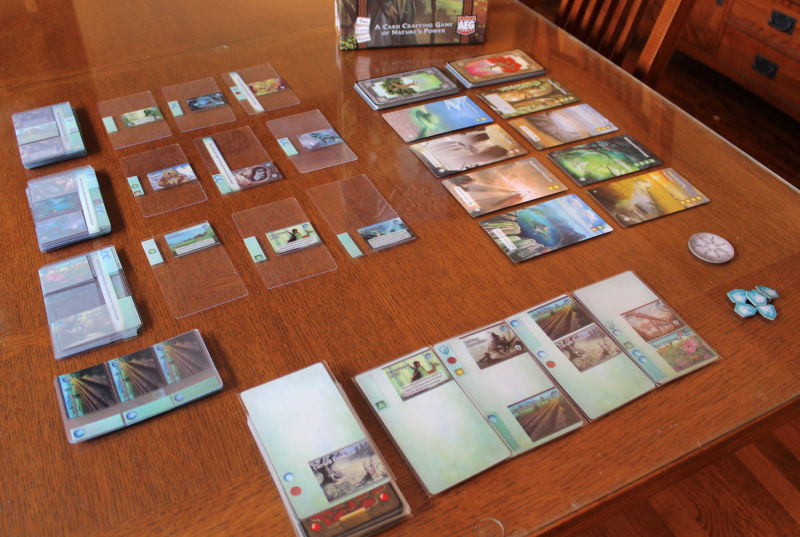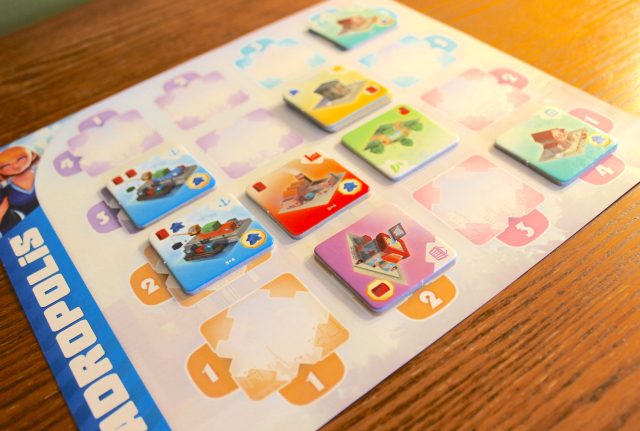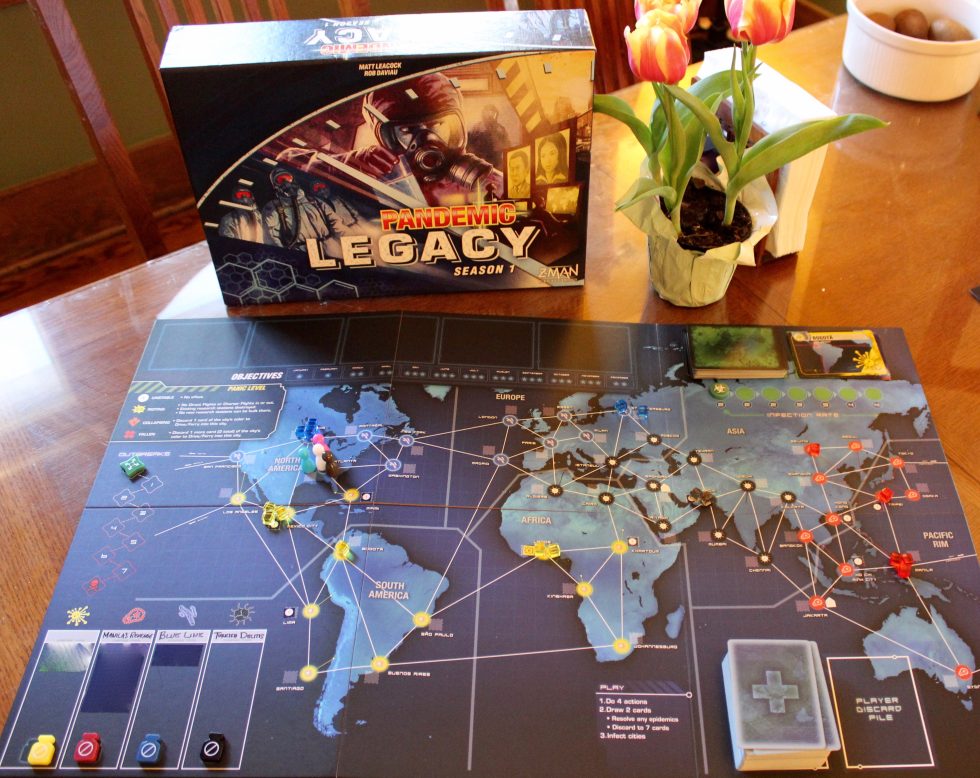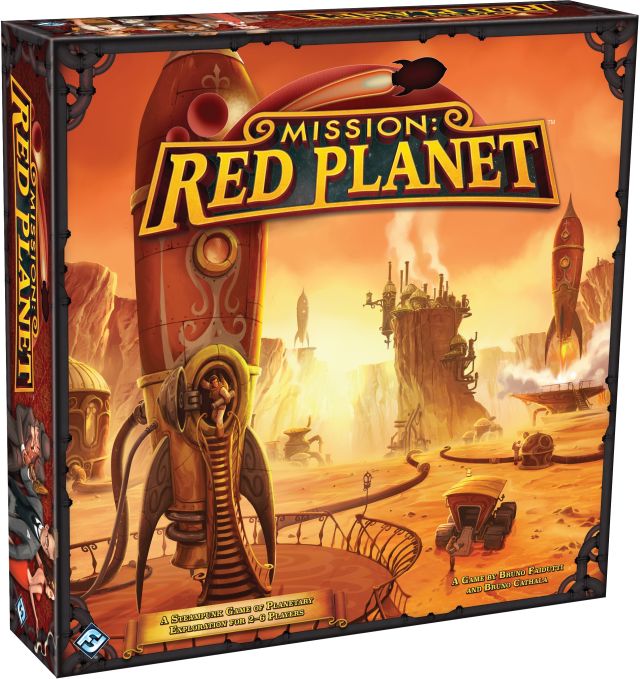
Enlarge / A hand in Mystic Vale. In the upper left sit the advancements for purchase, sorted by strength (most powerful in the top row, weakest in bottom row) along with the always-available Fertile Soil cards. To the right are the vale cards, purchased not with mana but with nature symbols. At the bottom is my deck of cards. In this hand, I have stopped after revealing three spoil symbols (the red trees). I add up the symbols on all cards except the "on deck card" atop my pile and find that I have 6 mana (blue orbs), 4 victory points (blue shields), and two green plus one yellow symbols. (credit: Nate Anderson)
Welcome to Ars Cardboard, our weekend look at tabletop games! Check out our complete board gaming coverage at cardboard.arstechnica.com—and let us know what you think.
The land has fallen under a blight, and the only way for the four Druid clans to gain power from Gaia and restore balance to the Valley of Life is through the time-honored ritual of... adding up blue mana spheres on the cards before you and spending them to buy more cards with more mana spheres. And, sometimes, victory points.
Look—don't ask too many questions about the theme. Mystic Vale is a game about healing the land in the same way that Splendor is a game about crafting diamond rings for the nobility. Both titles are essentially pure efficiency engines; build up a pool of resources that will allow you to buy more expensive resources faster than anyone else at the table and you win. There are no extraneous mechanics here to distract from the dopamine drip-drip-drip of steadily increasing card combos, and Mystic Vale has learned the key lesson of these kinds of games: don't overstay your welcome.






